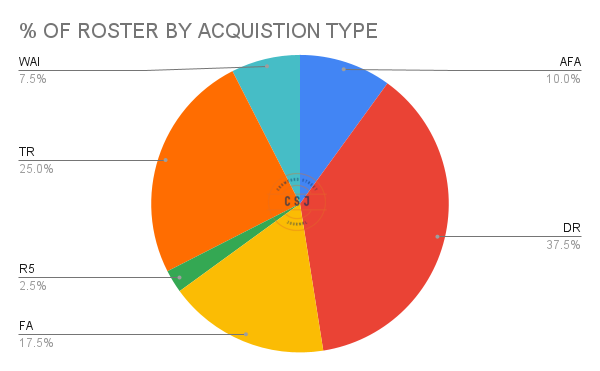How The Astros Acquire Talent
A breakdown of how the Astros acquired the players on the 40-man Roster
Fairly often, ideas for posts or analysis begin with a different project idea.
I had an idea to look at Dana Brown’s drafts as the Astros GM, but it turns out there’s not much to look at as far as MLB contributions go, at least not yet, just 2024 Jake Bloss and 2025 Brice Matthews.
But that “negligible” contribution from Brown’s drafts to date led me to wonder how the Astros had acquired their talent, especially in the era of “the worst farm system in baseball” moniker Houston is typically branded with.
It turns out that the draft is still the primary source of talent for the current 40-man roster, whether measured by the number of players (15) or fWAR (12.5), with trades coming in second.
This is likely to shift the further we get away from the 2022 draft (the last before Brown’s tenure) as drafting lower in the order and penalties imposed by MLB impacted the Astros number of top-level draft picks and prospects.
On the other hand, the Astros will earn an extra pick for Hunter Brown’s 3rd place Cy Young Award finish and probably another when Framber inevitably signs with another team in the near future.
I would expect the 37.5% of the 40-man roster to drop, at least for a few years, until the farm system can be replenished and begins producing MLB talent.
A note: The information on this page came from the Fangraphs roster resource page, which may be different than other sources, such as baseball-reference.com.
For example, Fangraphs lists Bryan King’s acquisition as “Rule 5-AAA (CHC) Dec ‘22” - the AAA Rule 5 draft in December of 2022.
Baseball-Reference lists it as “Selected off waivers by the Houston Astros from the Chicago Cubs.”
In all cases, I used the Fangraphs.com data for this analysis.
Thanks for reading!







